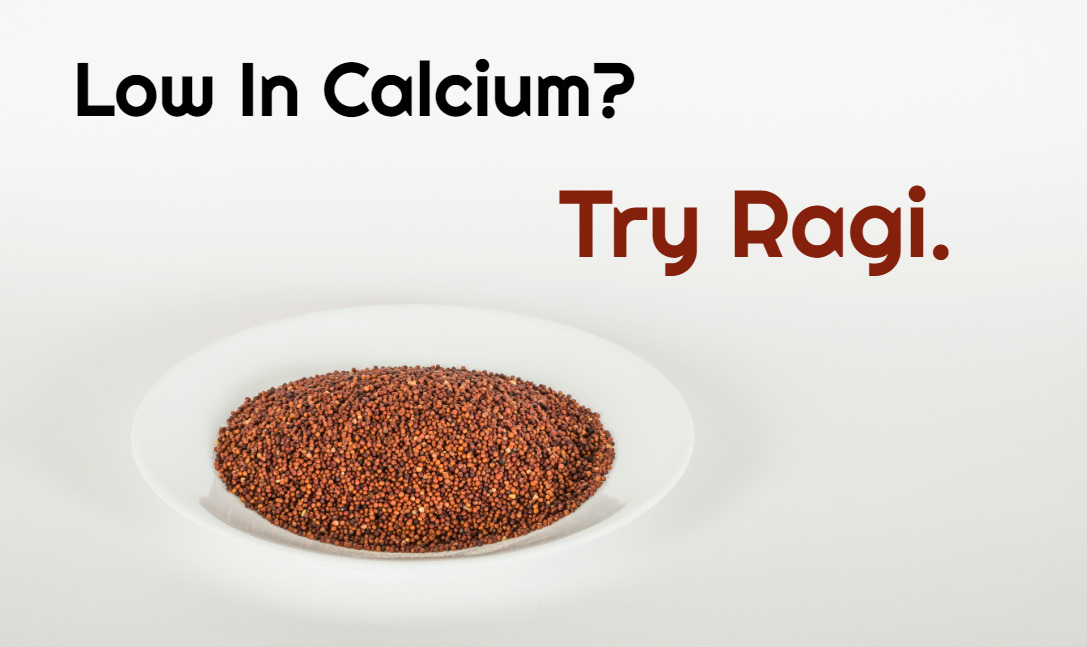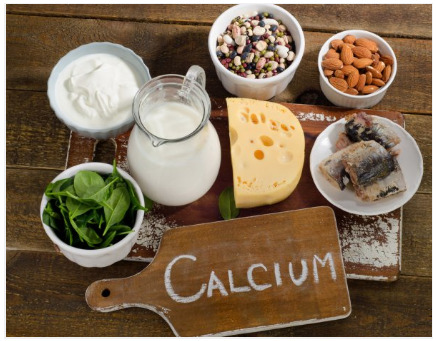
Low Calcium Levels? Time To Add Ragi To Your Diet
If you have low calcium levels, then you may want to consider a change in your diet. When doing so, remember ragi.
Ragi, or finger millet, is a commonly consumed food in south India. A staple food in some parts, ragi is eaten either in a cooked ball form (mudde), as a porridge or even as a roti.
What Is Ragi?
Ragi is a millet called Eleusine coracana, a crop with powerful nutraceutical properties. It is recognized globally as a super-cereal, with nutritional values of certain elements off the charts.
Not only is ragi high in protein, it is also packed with minerals and vitamins that are essential for the normal functioning of the human body.
Minerals include calcium, magnesium, manganese, phosphorus, zinc, sodium and potassium, among many others. It is rich in B complex vitamins and vitamin E as well.
Today, I will briefly discuss how ragi can be an excellent calcium source in your diet.
The Harms of Low Calcium
Calcium is the 5th most abundant mineral in the body. It makes up for 1.9% of our total body weight.
Low calcium levels in the blood, also called hypocalcemia, can lead to muscle cramps in various parts of the body. Thinning of the bones, also called osteoporosis, is also due to low calcium and vitamin D in the body. Osteoporosis makes the bones easily susceptible to fractures.

Those who have insufficient calcium in the diet can feel quite tired all the time. Sleep patterns might be disturbed, and insomnia can set in. Low energy levels become a problem.
Low calcium levels can affect your skin, making it dry and itchy. Your nails may become thin and brittle, leading the tips to break off time and again.
Calcium is an important part of our teeth. Low calcium in the diet or in the bloodstream can lead to brittle teeth and tooth decay.
Clearly, calcium has a role to play in keeping our body healthy. Making sure you get the right amount in your diet can help prevent numerous health problems.
Ragi As A Source Of Calcium
There are many food sources of calcium.
Many of us rely on regular cows milk and milk products (cheese, cream etc) to give us the calcium we need in our diet. Nuts such as almonds are also a good source.

You might be surprised to hear that while cow’s milk has around 112 mg calcium / 100 grams of milk, ragi contains a whopping 350 mg in every 100 grams.
That’s over 3 times the calcium content of milk.
When compared to brown rice and wheat, ragi has 10 times more calcium in comparison.
But how well is it absorbed in the digestive tract?
Studies have found that <30% of the calcium we consume in our diet is absorbed. This is because a large part of the calcium we consume is bound to phytates and oxalates, becoming insoluble and therefore useless to the body.
In comparison to rice and maize, the calcium in ragi is much better absorbed. This is despite it having a higher phytate and oxalate content.
Many of us rely on supplements to maintain our calcium levels and to keep our bones strong. However, one study found that the absorption of calcium from ragi is significantly better than supplements available commercially.
In other words, if you want to get more calcium, eat ragi.
Children need good sources of calcium to help build strong teeth and bones. Food companies will advertise products such as cheese and other such snacks as a good source of calcium. While these might be palatable, in the long run they can be harmful to your child’s health, due to the salt and fats in them.
Instead, opt to give your child ragi. One study found that a single serving of ragi based foods can give your child 25% of the recommended daily need of calcium. Furthermore, children retain this calcium a lot better, mostly because their digestive tracts are much better.
Ragi In Diabetes
I just thought I would mention a sentence or two about ragi as a food for people with diabetes.
Ragi generally has a high glycemic index (104), but is packed with other nutritive elements that make it a good choice if you have diabetes.
In south India, ragi eaters tend to mix it with rice and consume it. This can increase the blood sugar levels in those with diabetes. It is advised to just have ragi (mudde, roti) alone, instead of mixing it with rice.
Ragi contains polyphenols, which are believed to have some role in keeping blood sugar levels under control.
In one study looking at patients with type 2 diabetes, consumption of ragi lowered plasma glucose levels, as compared to a glucose rich meal.
But I must make one comment based on my experience here. Ragi has a glycemic index of 104, while white rice is 75. I have time and again found that patients who consume ragi based foods also have uncontrolled blood sugar levels. This is probably because they have made it their staple, and consume it 2 or 3 times a day. Stopping ragi and rice has drastically lowered their blood glucose levels.
As a general rule, if a diabetic patient is undernourished, then I recommend ragi in their diet. If a diabetic patient is overweight, I advise them against it.
Closing Remarks
When it comes to topping up your calcium levels, make sure you choose ragi as one of your foods. If it is not something you enjoy eating, then replace it with other calcium rich foods. Alternatively, you could speak to your doctor about calcium supplementation.

Dr Vivek Baliga is a medical practitioner and the director of a diagnostic center – Baliga Diagnostics – in Bangalore. He specializes in diabetes and heart disease, and is a visiting consultant in Internal Medicine at corporate hospitals. He is married and has one son.

Excellent and informative as always. Yes Ragi mudde!!
I have been a regular consumer of Ragi. Now I’m happy about it!